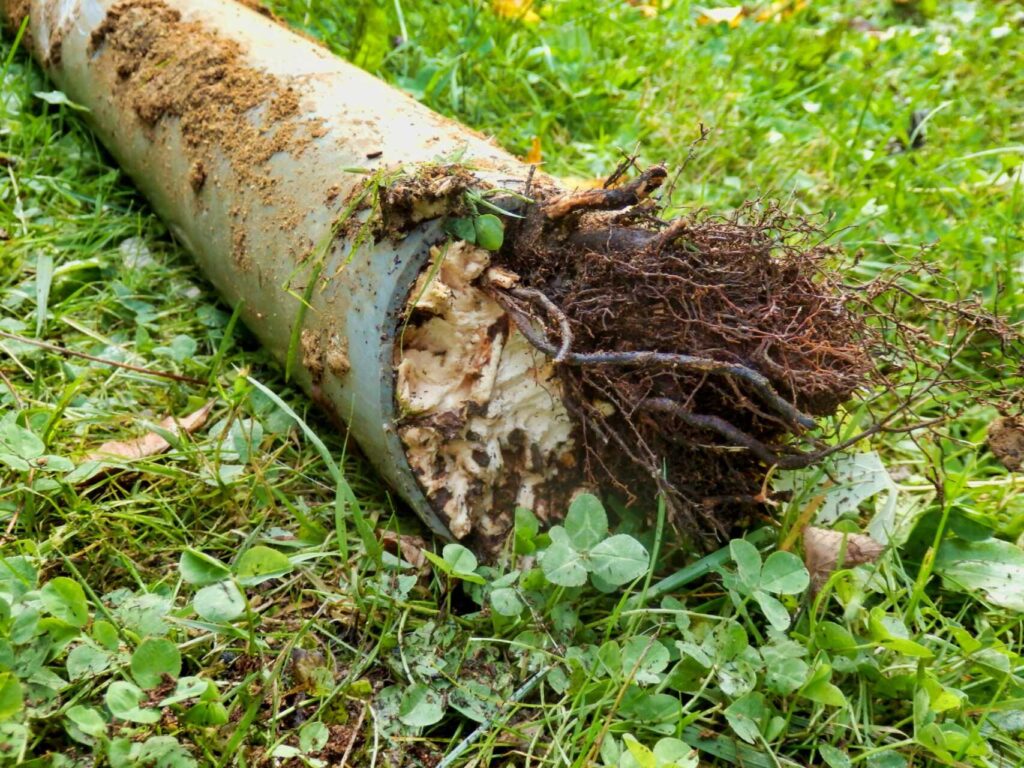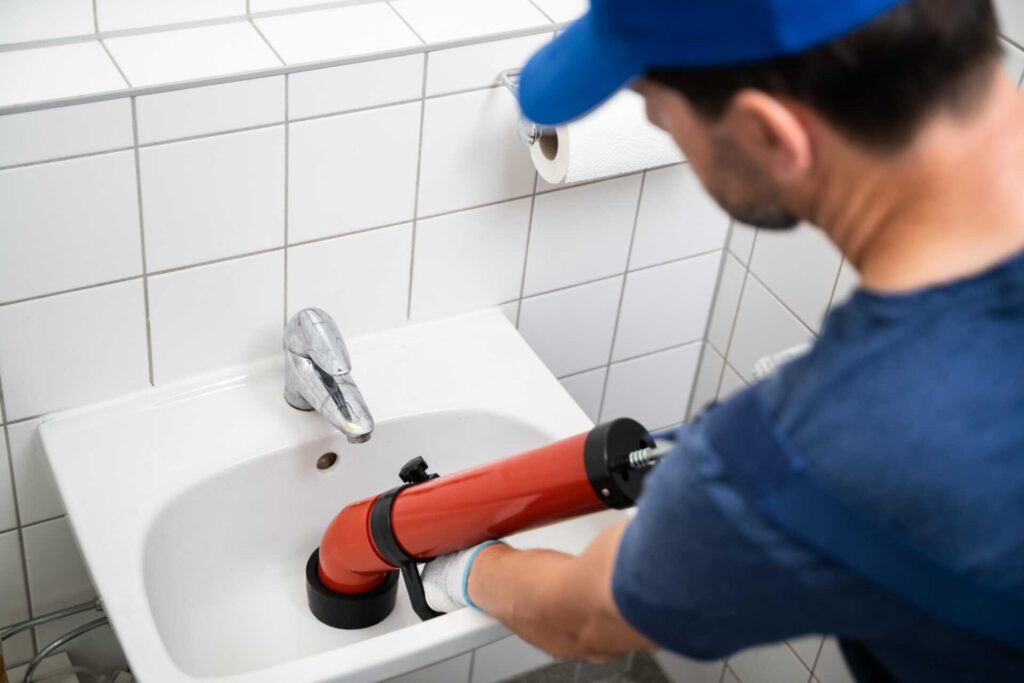
Contents
Is it really true that quick action can save you from a costly sewer line repair disaster? When an emergency strikes, knowing how to respond can make all the difference, but many homeowners overlook essential steps. You’ll want to understand what to do in those frantic moments, from evaluating the damage to finding reliable repair services nearby. The decisions you make right away can set the tone for the entire repair process. What should you prioritize first, and how do you choose the right professionals to help?
Key Takeaways
- Recognize early signs of sewer issues, such as unusual odors and slow drainage, to prevent costly repairs and health hazards.
- Shut off the main water supply and power to affected areas immediately to minimize damage and avoid electrical hazards.
- Research local repair services, checking reviews and service ratings to find reliable professionals for emergency repairs.
- Ask potential providers about their qualifications, repair methods, insurance coverage, and availability for 24/7 emergency service.
- Schedule regular maintenance to identify potential issues early, preventing emergencies and ensuring efficient wastewater management.
Recognizing Sewage Emergencies
When you notice unusual odors or slow drainage in your home, it’s crucial to recognize these signs as potential sewage emergencies. Sewage odors often indicate a problem within your plumbing system, such as a blockage or a broken pipe. If you detect a persistent foul smell, don’t ignore it; it could mean that sewage is leaking into your home or that a sewage backup is imminent.
Slow drainage is another significant indicator. If water isn’t flowing as it should in sinks, tubs, or toilets, it can signal a serious issue in your sewer line. This might stem from debris accumulation, tree root invasion, or even pipe deterioration. Ignoring slow drainage can lead to more substantial complications, including complete backups that can disrupt your daily life.
Additionally, be aware of gurgling sounds coming from your drains. These noises often suggest that air is trapped in the plumbing system, which can accompany a blockage. Pay attention to the frequency and severity of these signs. If they worsen, it’s imperative to act quickly.
Recognizing these symptoms early allows you to take appropriate measures before the situation escalates. Being proactive about sewage odors and slow drainage can save you from costly repairs and health hazards. Acknowledging these warnings is the first step in ensuring your home remains a safe and welcoming space.
Immediate Actions to Take
Taking immediate action can greatly mitigate the consequences of a sewage emergency. When you recognize a problem, your first step is to assess the situation. Identify the source of the sewage leak and determine if it poses an immediate threat to your safety or property. If the situation is severe, evacuate the area to avoid exposure to harmful contaminants.
Next, you should shut off your water supply. This quick response prevents further damage and minimizes the amount of sewage that can leak into your home. Locate your main water valve and turn it off to stop the flow. It’s also wise to turn off power to affected areas, especially if there’s standing water, to prevent electrical hazards.
Emergency preparedness involves gathering essential supplies. Have gloves, masks, and protective eyewear on hand to safeguard yourself from exposure. Use buckets or towels to contain any visible sewage if it’s safe to do so. Avoid flushing toilets or using sinks, as this can exacerbate the problem.
Finally, document the situation with photos and notes. This information can be invaluable later when discussing the issue with repair professionals or filing insurance claims. Remember, the sooner you take these immediate actions, the better you can protect your home and family. By being proactive, you create a sense of community and support, ensuring that you’re not alone in maneuvering through this challenging situation.
Finding Local Repair Services
To find local sewer line repair services, start by researching providers in your area. Compare their service options, pricing, and customer reviews to ensure you select a reliable contractor. This careful evaluation will help you make an informed decision quickly.
Research Local Providers
How can you effectively find local repair services for your emergency sewer line issues? Start by conducting thorough research to ensure you’re selecting a reliable provider. Utilize online platforms to check local reviews and service ratings. This will help you gauge customer satisfaction and identify reputable companies in your area.
After compiling local reviews and service ratings, narrow down your options to a few top providers. Reach out for quotes and further information. This process will help you find a trustworthy service and give you peace of mind during a stressful situation. Remember, the right provider can make all the difference in resolving your sewer line issues efficiently.
Compare Service Options
After identifying reliable providers through research, the next step involves comparing service options to determine which repair service best fits your needs. This stage is essential, as it allows you to conduct effective service comparisons and perform a thorough cost analysis.
When evaluating your options, consider the following factors:
- Experience and Expertise: Look for companies with a proven track record in sewer line repair. Experienced technicians often provide more efficient solutions.
- Pricing Transparency: Request detailed estimates to understand what’s included. A clear breakdown can prevent unexpected charges later.
- Warranty and Guarantees: Services that offer warranties indicate confidence in their workmanship and provide peace of mind for you as a homeowner.
Questions to Ask Professionals
When you’re facing a sewer line emergency, knowing the right questions to ask professionals can make all the difference in ensuring a swift and effective repair. Start by inquiring about their professional qualifications. Ask how long they’ve been in the business and if they hold any relevant certifications or licenses. This helps ensure you’re dealing with someone who’s knowledgeable and experienced.
Next, ask about their repair methods. While you won’t investigate specifics just yet, knowing they use modern, reliable techniques can offer peace of mind. It’s also important to inquire about their insurance coverage. You want to make sure they’re fully insured to protect yourself from any liability during the repair process.
Don’t hesitate to ask for references from previous clients. A reputable professional should have a list of satisfied customers willing to vouch for their work. This gives you insight into their reliability and quality of service.
Additionally, clarify their availability. Emergencies don’t adhere to a schedule, so ask if they offer 24/7 service. This ensures you can get help when you need it most.
Lastly, discuss pricing. Ask for a detailed estimate and inquire if there are any potential additional costs. Transparent pricing can prevent unpleasant surprises down the line. By asking these questions, you’ll gain confidence in your choice of professional, ensuring that your sewer line emergency is handled efficiently and effectively.
Understanding Repair Methods
When it comes to sewer line repairs, you’ll encounter several methods, each suited for different situations. The traditional dig-and-replace method is one option, while trenchless technology solutions and pipe-lining techniques offer less invasive alternatives. Understanding these methods can help you choose the best approach for your specific repair needs.
Traditional Dig-and-Replace Method
While modern techniques have emerged, the traditional dig-and-replace method remains a reliable approach for sewer line repairs. This method involves excavating the area above the damaged pipe, removing the old line, and replacing it with new material. It’s straightforward and allows for a complete inspection of the sewer system, ensuring that any additional issues can be addressed during the process.
Here are a few key considerations when opting for traditional methods:
- Thorough Inspection: Excavation techniques provide a clear view of the existing infrastructure, allowing for extensive repairs.
- Durability: New pipes installed through this method often have a longer lifespan, reducing the likelihood of future issues.
- Flexibility: You can easily make modifications to the line during the replacement process.
Though it can be disruptive, this method ensures that you’re addressing the root cause of the problem effectively. By understanding the traditional dig-and-replace method, you’re better equipped to decide on the right approach for your sewer line repair needs, preserving the integrity of your home’s plumbing system.
Trenchless Technology Solutions
As homeowners seek efficient alternatives to traditional repair methods, trenchless technology has gained popularity for its minimal disruption and effective results. This innovative approach allows for sewer line repairs without extensive digging, preserving your landscape and reducing the hassle associated with conventional methods.
One of the primary trenchless benefits is its speed; repairs typically take less time, meaning less inconvenience for you. Additionally, this method often proves to be more cost-effective in the long run, as it reduces labor costs and potential restoration expenses.
However, it is crucial to recognize trenchless limitations. Not all sewer line issues are suitable for trenchless methods; severe structural damage or extensive blockages might necessitate traditional repairs. Also, the initial investment can be higher than standard techniques, though it usually balances out over time.
Pipe Lining Techniques
Pipelining techniques offer an innovative way to restore damaged sewer lines without the need for extensive excavation. This method minimizes disruption to your landscaping and provides a long-lasting solution. Before any repair, a thorough pipe inspection is essential to assess the extent of damage and determine the appropriate approach.
Here are some key aspects of pipe lining techniques:
- Non-Invasive Process: This method avoids digging up the entire line, reducing labor and cleanup costs.
- Durable Materials Used: Typically, epoxy resins or fiberglass are employed, ensuring a strong and corrosion-resistant lining.
- Quick Installation: Once the inspection is complete, the lining can often be installed in a single day, restoring functionality quickly.
Importance of Regular Maintenance
Regular maintenance of sewer lines is essential for preventing costly emergencies and ensuring efficient wastewater management. By investing time and resources into preventive measures, you can avoid major issues that disrupt your home and community. Regular routine inspections allow you to identify potential problems before they escalate, saving you both time and money.
To help you understand the importance of regular maintenance, consider the following table illustrating common sewer line issues, their causes, and preventive measures:
| Issue | Cause | Preventive Measure |
|---|---|---|
| Clogs | Grease buildup | Regularly clean drains |
| Tree root intrusion | Nearby vegetation growth | Trim trees and roots regularly |
| Pipe corrosion | Age and material | Inspect pipes for wear |
| Improper installation | Faulty workmanship | Hire qualified professionals |
| Backups | Blockages or pipe damage | Schedule routine inspections |
Preparing for Service Visits
When preparing for a service visit to address sewer line issues, it’s important to gather relevant information about your system and any previous problems you’ve encountered. This proactive approach enhances service preparation and ensures the technician can diagnose the issue more efficiently. Compile a homeowner checklist that includes critical details about your sewer line, such as age, any past repairs, and specific symptoms you’ve noticed.
Here are a few items to think about adding to your checklist:
- Previous Repair Records: Document any past issues or repairs to provide the technician with context.
- Symptoms Noted: Jot down any unusual signs like slow drains or foul odors, as these can guide the diagnosis.
- Access Points: Identify where the technician can access your sewer line, such as cleanouts or basement entry points.
Before the technician arrives, make certain the area around these access points is clear and accessible. This expedites the service but also fosters a collaborative atmosphere with the technician. Communicate openly about your concerns and any observations you’ve made. Remember, you’re a partner in this process.
Avoiding Common Pitfalls
While it might seem straightforward, avoiding common pitfalls during sewer line repairs requires careful attention to detail. You must prioritize preventive measures to ensure your repairs are effective and lasting. One common mistake is neglecting to accurately identify the source of the problem. Instead of making assumptions, take the time to conduct a thorough inspection. This step can save you from unnecessary repairs and costs.
Another pitfall is using the wrong materials for your specific sewer line issue. Always consult with professionals or reliable resources to determine the best materials suited for your repair. Using inappropriate materials can lead to further complications down the line, such as leaks or structural damage.
Additionally, don’t rush through the process. It’s tempting to complete repairs quickly, especially during emergencies, but hasty work can lead to errors. Instead, focus on executing each step correctly. You should also be cautious of over-relying on DIY methods without proper knowledge. While home improvement projects can be rewarding, sewer line repairs often require specialized skills and tools.
Finally, remember to document your work. Keeping records allows you to track repairs and can be invaluable if future issues arise. By steering clear of these common mistakes and implementing effective preventive measures, you’ll enhance the quality of your repairs and contribute to a healthier plumbing system in your community.
Long-term Solutions and Tips
To ensure the longevity of your sewer line repairs, it is vital to implement sustainable solutions that address the underlying issues rather than just treating the symptoms. This proactive approach ensures the effectiveness of your repairs and fosters a healthier plumbing system in your home. Here are some long-term solutions and tips to reflect upon:
- Regular Inspections: Schedule routine assessments of your sewer lines to identify potential problems before they escalate.
- Proper Disposal Practices: Educate your household on what can and can’t be flushed down the toilet or poured down the sink, helping to prevent clogs and damage.
- Tree Root Management: Keep an eye on nearby trees that could invade your sewer lines. Reflect on root barriers or regular trimming to minimize risks.
Incorporating preventative measures into your routine is vital. For instance, think about using enzyme-based cleaners periodically to break down organic matter in your pipes. This can greatly reduce the likelihood of future blockages. Additionally, investing in long-term maintenance, such as trenchless repair options, can be beneficial. These methods often cause less disruption and extend the lifespan of your sewer line.
Summary
In the face of a sewage emergency, think of your home as a ship maneuvering stormy seas. By taking swift action and securing professional help, you can steer clear of disaster. Regular maintenance acts as your compass, guiding you toward long-term solutions that keep your vessel steady. Remember, a proactive approach protects your property and ensures a safe harbor for your family. Stay informed, stay prepared, and your home will weather any storm.



